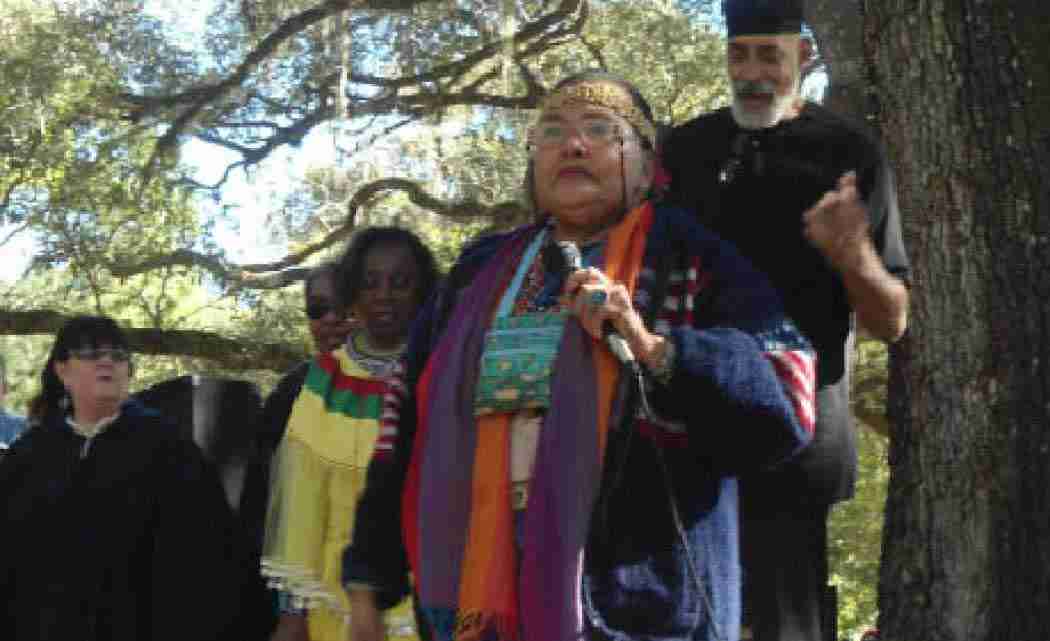JUPITER — The Loxahatchee Battlefield Preservationists will present the “We R Florida” commemoration services in remembrance of the 177th anniversary of the Seminole Maroon War, which was fought in Palm Beach County in the early 1800s. The commemoration ceremonies will be held Sunday, Jan. 18 at the Loxahatchee River Battlefield Park, 9060 West Indiantown Rd., Jupiter, 10 a.m. – 3 p.m.
This free event is open to the public and will mark the 20th year the two Seminole war battles that were fought at this site will be remembered with a full day of ceremonial observances which will include lectures and historical displays and battlefield tours. This annual commemoration will also include traditional Native American and African prayers and ceremonies as well as a tribute to fallen soldiers from both sides of of the conflict.
Gene “Dinizulu” Tinnie, a member of the Florida Black Historical Research Project, said that the commemoration ceremonies are important because they tell a story many don’t know. “The actual site of the battlefield was only discovered in the 1990s,” he said. “Many people think the Seminoles are an Indian tribe when in fact they were a combination of black people escaping slavery and Native Americans escaping from European settlers in Florida.”
The Black Seminoles are a small offshoot of the Gullah slaves who escaped from the rice plantations in coastal South Carolina and Georgia into the Florida peninsula in the 18th century, according to Yale University educational site, www.yale.edu/glc/Gullah. The Gullahs, also known as the Seminole Negros or Black Seminoles, adopted Indian or Native American clothing, while the Indians acquired a taste for rice and an appreciation for Gullah music and folklore. The Gullahs were physically more suited to the tropical climate and possessed an indispensable knowledge of tropical agriculture, according to the Yale University educational site. Without the Gullahs assistance, the Indians would not have been able to cope effectively with the Florida environment.
The Seminole war lasted for six years with former slaves and Native Americans fighting side by side, according the Yale University report. As many as 1,500 American soldiers lost their lives. “The battlefield (in Palm Beach County) was a turning point in the war,” Tinnie said. “The Seminoles were defeated in the battle but they were lured back to Jupiter under the (pretense) of a truce. And then they were captured.”
There were a large number of blacks that fought in the war and sometimes outnumbered the Native Americans in the various battles. The American leading the United States troops, Brigadier General Thomas Jesup, referred to the war as not an Indian war but a Negro war because of this, Tinnie said. Some of the captives were sent to Oklahoma and others were given over to slave catchers, he added.
The two battles of being commemorated we’re both fought in January 1838 in Jupiter and seemed to have been symbolic of a transition from of a violent to a nonviolent approach to resolving conflicts over time, Tinnie said. “It’s somewhat providential that those two battles, one that was fought on the 18th of January (in 1838) and one that was fought on 24th January (that same year), happened right around the time when the observers of Dr. Martin Luther King Jr.’s birthday is held today,” he said.
There are a number of lessons to be learned from these battles including cooperation, inclusiveness and African Americans and Native Americans having a very common understanding of life and survival, Tinnie said. “When we look back on Native American and African American history, they had very profound cultural and spiritual knowledge that sustained them for literally thousands of years,” he said. “And that wisdom is something that we need to get back to appreciating.”
For information about the remembrance ceremonies call (305) 904-7620 or (561) 748-4014 or visit, www.fbhrpinc.org










No Comment